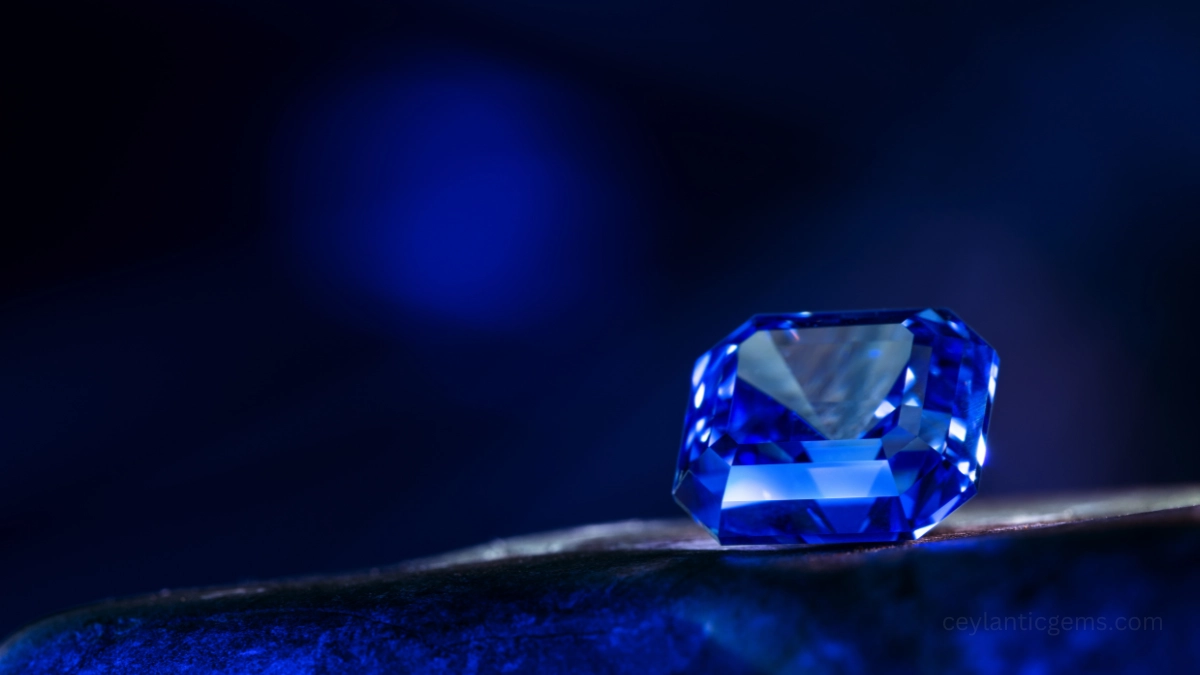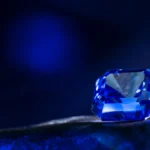Email: [email protected]
Ceylon sapphire, hailing from Sri Lanka, is renowned for its stunning beauty and rich history. This captivating gemstone showcases an array of colors, with the vibrant blue being the most sought after. Ceylon sapphires have become a symbol of luxury, elegance, and desirability in the jewelry market, making them truly special.
Origins of Ceylon Sapphire
Sri Lanka, historically called Ceylon, has been a significant source of sapphires for centuries. The island’s unique geology and climate contribute to the formation of these remarkable gemstones. Ceylon sapphires are primarily found in alluvial deposits, where they have been naturally weathered and transported over time.
The mining processes used in Sri Lanka often involve traditional methods passed down through generations. Artisanal miners carefully extract sapphires by hand from riverbeds and valleys. This method is not only sustainable but also ensures that each stone is ethically sourced. The legend of Ceylon boasts a treasure trove of sapphire varieties, all formed deep within the earth, making each find a distinct piece of natural art.
Unique Characteristics of Ceylon Sapphire
Ceylon sapphires are characterized by their vivid colors, primarily blue, but they can also be found in shades of yellow, pink, and green. The most valuable varieties are typically the deep blue sapphires with strong saturation. The colors often appear more vibrant compared to other sapphires due to the specific geological conditions in Sri Lanka.
These gemstones are also known for their exceptional clarity. While inclusions can be present, high-quality Ceylon sapphires are often eye-clean, allowing light to pass through them more effectively, which enhances their brilliance. The stone’s ability to refract light makes it not only attractive but also a fantastic choice for those seeking something unique in their jewelry collection.
The Beauty of Color and Clarity
Color is the first thing that captures one’s attention when looking at a Ceylon sapphire. The rich, velvety blue owes its beauty to the trace elements found in the mineral corundum. Iron and titanium, for example, contribute to the deep blue color, while those containing chromium can exhibit shades of pink or violet.
In terms of clarity, Ceylon sapphires often showcase fewer inclusions than their counterparts from other locations. This high level of transparency can be attributed to the natural processes involved in their formation. When a gemstone features fewer inclusions, it not only looks better but can also result in better durability. Consequently, these sapphires are often offered in high-end jewelry.
Treatments and Enhancements
Many sapphires on the market are treated to enhance their color and clarity. Common treatments include heat treatment, which can intensify color, or clarity enhancements through the filling of fissures. Highly reputable dealers will disclose any treatments applied, as natural and untreated stones are often more valuable.
Ceylon sapphires have a reputation for being among the best-quality gemstones worldwide. Although some may undergo treatment, many of them remain largely natural, providing an assurance of authenticity. Buyers should always inquire about specific treatments to ensure they receive a stone that meets their expectations.
Historical Significance
Sapphires have held a special place in human culture for thousands of years. For ancient civilizations, they were considered symbols of power and protection. Kings and queens adorned themselves with the gemstone, believing it would bring them good fortune and divine favor. The historical allure of Ceylon sapphires adds a layer of prestige, making them even more coveted.
Sri Lankan culture has deeply integrated sapphires into its history. They are often featured in traditional jewelry, used during important ceremonies and celebrations. As a result, Ceylon sapphires are not just gemstones; they carry the essence of the region’s rich heritage.
Market Demand and Value
The global market recognizes Ceylon sapphires for their beauty and quality, increasing their demand over the years. Due to their rarity and the limited supply of high-quality stones, these gemstones often fetch high prices at auction and in retail markets. The investment in Ceylon sapphires typically yields a good return due to their enduring popularity.
Emerging markets have shown a growing interest in these gemstones, contributing to their elevated status in the global jewelry market. Collectors and connoisseurs alike seek out pieces featuring high-quality Ceylon sapphires, further affirming their esteemed position as a luxury item.
Choosing the Right Ceylon Sapphire
When purchasing a Ceylon sapphire, it is crucial to consider several factors. The four Cs — color, clarity, cut, and carat weight — play a significant role in determining a sapphire’s value.
-
- Color: Look for a vibrant hue with strong saturation.
-
- Clarity: Ensure the stone is eye-clean, meaning it should have minimal visible inclusions.
-
- Cut: The quality of the cut will enhance the stone’s brilliance and overall visual appeal. A well-cut stone maximizes light reflection, contributing to its sparkle.
-
- Carat Weight: Larger sapphires are rare and, therefore, are typically more expensive.
Caring for Your Ceylon Sapphire
To preserve the beauty of Ceylon sapphires, proper care is essential. Regular cleaning is advisable to remove dirt and oils that can dull the stone’s brilliance. A mixture of warm water and mild soap, along with a soft brush, can effectively clean the gemstone.
Avoid exposing sapphires to harsh chemicals or extreme temperatures, as these can damage the stone. When not in use, store your Ceylon sapphire in a soft pouch or a separate compartment in your jewelry box to prevent scratches from other gemstones.
Conclusion
Ceylon sapphires hold a remarkable place in the world of gemstones, distinguished by their vibrant colors, exceptional clarity, and rich historical significance. Their unique origin, artisanal mining practices, and strong market demand contribute to their status as exceptional choices for jewelry.
Investing in a Ceylon sapphire not only provides an aesthetically pleasing accessory but also connects the wearer to a legacy that spans centuries. As these gemstones continue to captivate gem enthusiasts and collectors alike, their allure is likely to endure, making them timeless treasures.
FAQs
1. Are Ceylon sapphires only blue?
Ceylon sapphires come in a variety of colors, including blue, yellow, pink, and green. However, the blue variety is the most popular and sought after.
2. How do I know if my Ceylon sapphire is natural?
To verify the authenticity of a Ceylon sapphire, it is recommended to obtain a gemological certification from a reputable laboratory that can confirm its natural status and any treatments.
3. What is the average price range for Ceylon sapphires?
Prices for Ceylon sapphires vary widely based on factors such as color, clarity, cut, and carat weight. High-quality gemstones can range from a few hundred to several thousand dollars per carat.
4. Can Ceylon sapphires be reset into different jewelry?
Yes, Ceylon sapphires can be reset into different pieces of jewelry. However, it is advisable to consult a professional jeweler to ensure the integrity of the stone is maintained during the resetting process.
5. How can I determine the quality of a Ceylon sapphire?
To assess the quality of a Ceylon sapphire, consider the four Cs: color, clarity, cut, and carat weight. Each of these factors plays a crucial role in determining a gemstone’s overall value and appeal.


